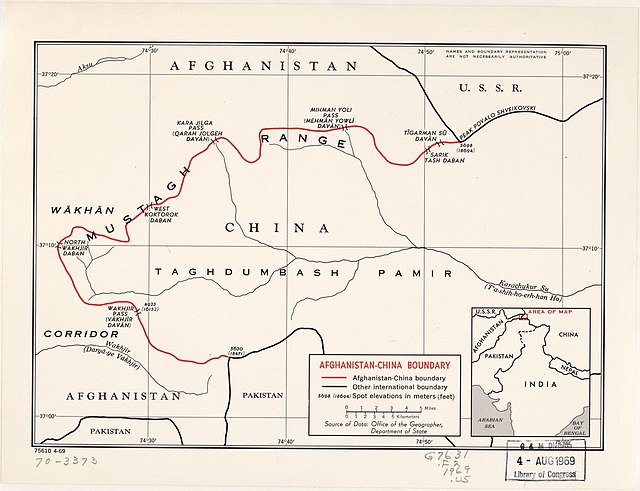Top Qs
Timeline
Chat
Perspective
Karachukar Valley
Valley in Xinjiang, China From Wikipedia, the free encyclopedia
Remove ads
Karachukar Valley[1][a] or Chalachigu Valley (Chinese: 卡拉其古河谷) is a valley in Taxkorgan Tajik Autonomous County, Xinjiang, China. It contains the basin of the Karachukar River, a tributary of the Tashkurgan River,[4] and is regarded as part of Taghdumbash Pamir.[5] The valley borders Afghanistan (Wakhan Corridor or Little Pamir) to the west and northwest, Tajikistan to the north, and Pakistan (Gojal or upper Hunza) to the south.[6] The name of the valley is from Kyrgyz, meaning "black cave".[7]
The valley is part of the Taxkorgan Nature Reserve.[8] The protected Marco Polo sheep is only found in the wild around this area.[6] The region is often referred to by the Chinese as the Chinese portion of the Wakhan Corridor.[9] There is an ethnic Kyrgyz village called Bayik (Chinese: 排依克村 or Chinese: 阿特加依里村).[10][11]
The entire Chalachigu Valley is closed to visitors. However, local residents and herders from the area are permitted access.[citation needed]
In March 2017, CCTV-7's Documentary for Military program[12] produced a mini-series covering the numerous border outposts in Chalachigu Valley.[13]
Remove ads
Mountain Passes

The valley was a significant thoroughfare of the Silk Road during ancient times.[citation needed] Around the valley are numerous passes connecting to other countries:
- Tajikistan - Beyik Pass
- Afghanistan - Wakhjir Pass, Tegermansu Pass
- Pakistan - Kilik Pass, Mintaka Pass
Of the above passes, it is believed that the famous Chinese Buddhist pilgrim Xuanzang traveled through Wakhjir Pass on his return trip back to China around 649 AD.[14] Some Chinese historians argue that he also used Beyik Pass on his way to India.[15]
Remove ads
See also
Notes
References
External links
Wikiwand - on
Seamless Wikipedia browsing. On steroids.
Remove ads

